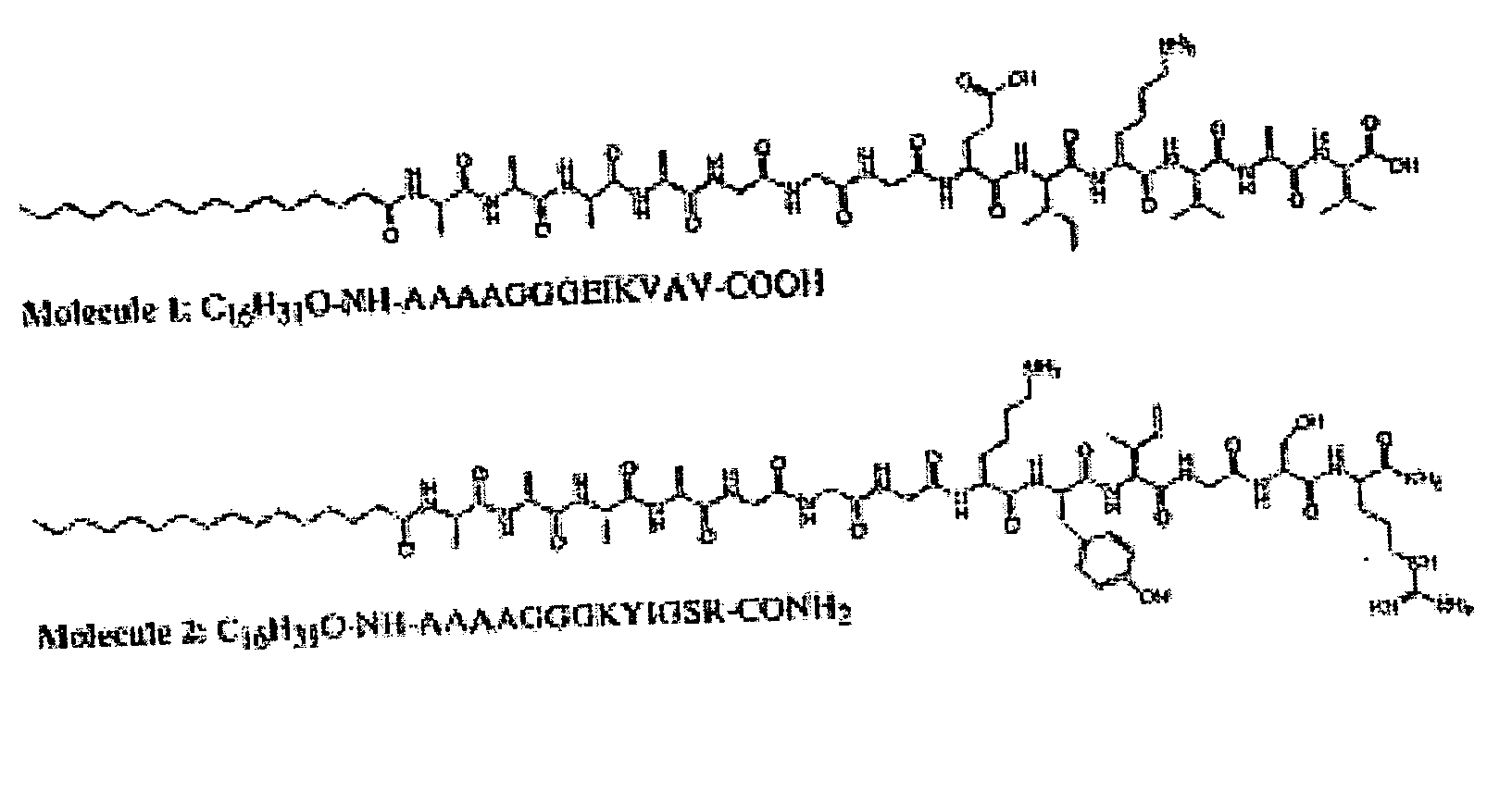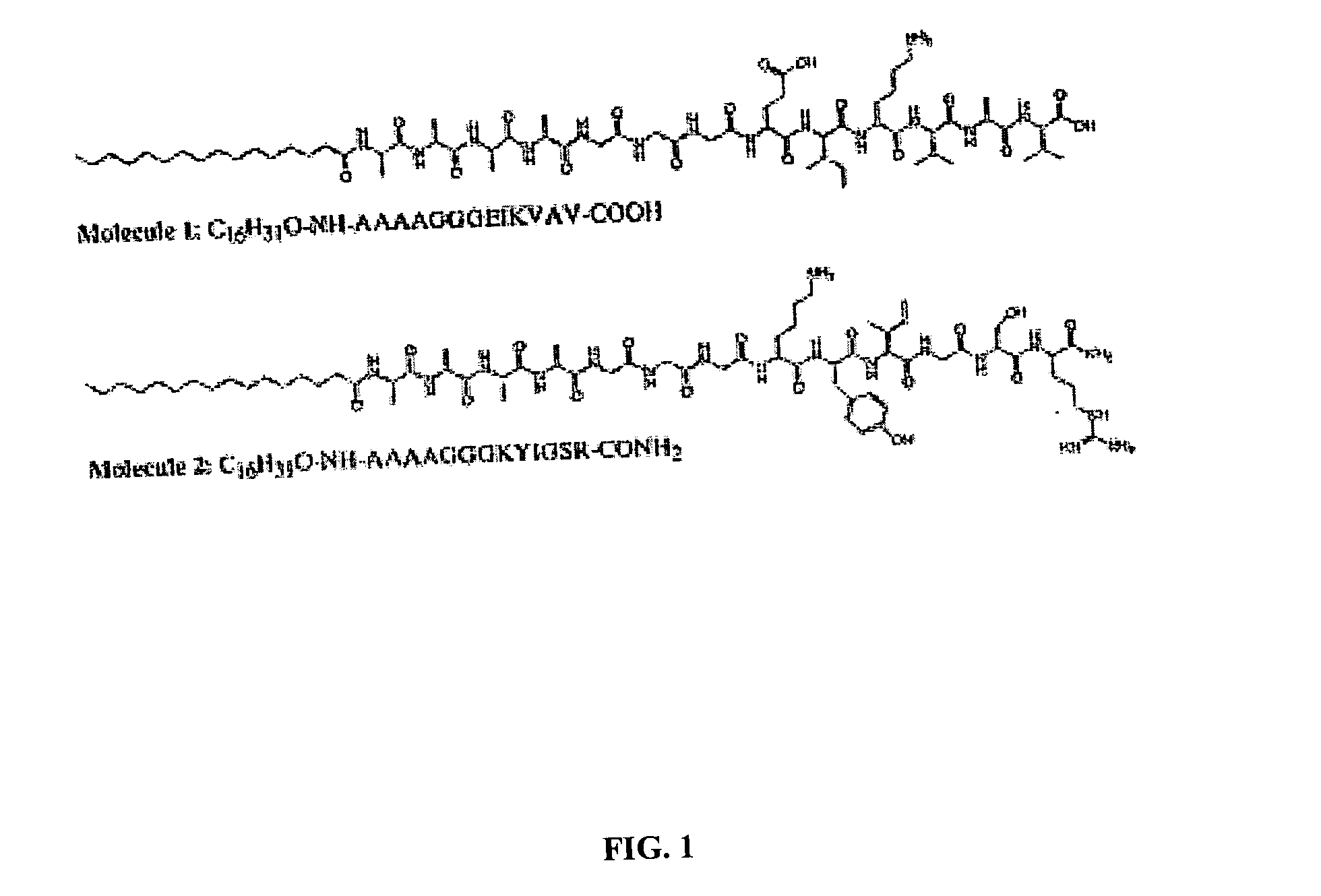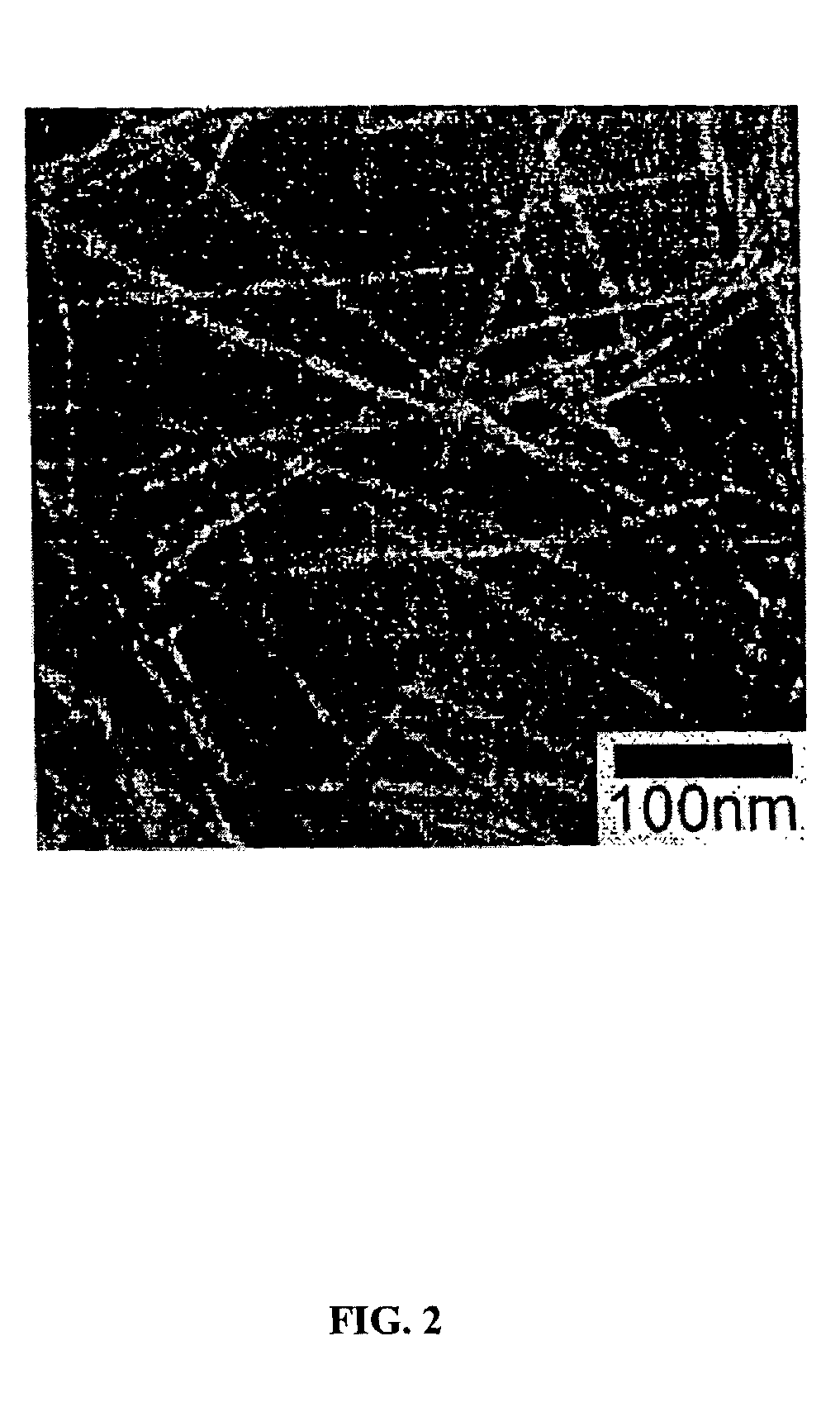Self-assembled peptide-amphiphiles & self-assembled peptide nanofiber networks presenting multiple signals
a technology of peptide nanofibers and amphiphiles, which is applied in the direction of peptides, peptide/protein ingredients, immunoglobulins, etc., can solve the problems of lack of biologically relevant signals, poor cell attachment, poor integration into the site where tissue engineered materials are utilized, etc., to promote cell-substrate adhesion, promote cell-substrate adhesion, and promote tissue repair or reconstruction
- Summary
- Abstract
- Description
- Claims
- Application Information
AI Technical Summary
Benefits of technology
Problems solved by technology
Method used
Image
Examples
example 1
[0045] Materials and Methods: Abbreviations: PA: peptide-amphiphile, TEM: transmission electron microscopy, DTT: dithiothreitol, EDT: ethanedithiol, TIS: triisopropyl silane, TFA: triflouroacetic acid, HBTU: (2-(1h-benzotriazole-1-yl)-1,1,3,3-tetramethyluronium hexafluorophosphate, DiEA: Diisopropylethylamine; ESI: Electrospray ionization. Except as noted below, all chemicals were purchased from Fisher or Aldrich and used as provided. Amino acid derivatives were purchased from Applied BioSystems and NovaBiochem; derivatized resins and HBTU were also purchased from NovaBiochem. All water used was deionized with a Millipore Milli-Q water purifier operating at a resistance of 18 MW.
[0046] The peptide-amphiphiles were prepared on a 0.25 mmole scale using standard FMOC chemistry on an Applied Biosystems 733 A automated peptide synthesizer. Molecule 1 has a C-terminal carboxylic acid and was made using pre-derivatized Wang resin. Molecule 2 has a C-terminal amide and was made using Rink ...
PUM
| Property | Measurement | Unit |
|---|---|---|
| Electric charge | aaaaa | aaaaa |
| Amphiphilic | aaaaa | aaaaa |
| Adhesion strength | aaaaa | aaaaa |
Abstract
Description
Claims
Application Information
 Login to View More
Login to View More - R&D
- Intellectual Property
- Life Sciences
- Materials
- Tech Scout
- Unparalleled Data Quality
- Higher Quality Content
- 60% Fewer Hallucinations
Browse by: Latest US Patents, China's latest patents, Technical Efficacy Thesaurus, Application Domain, Technology Topic, Popular Technical Reports.
© 2025 PatSnap. All rights reserved.Legal|Privacy policy|Modern Slavery Act Transparency Statement|Sitemap|About US| Contact US: help@patsnap.com



